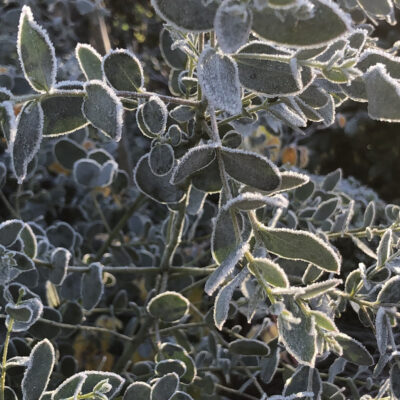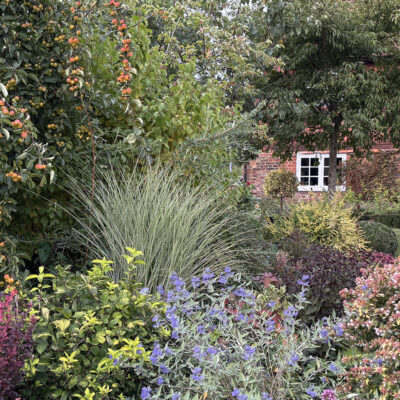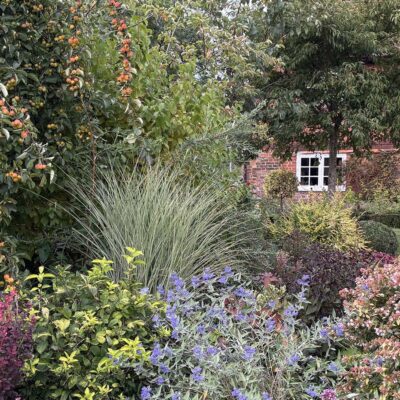An enchanting and truly individual garden in Bethersden is opening this August in aid of Macmillian. Jo Arnell goes along for a special preview
This month we are visiting a one-of-a-kind beautiful garden in Bethersden; an archetypal Kent cottage oozing Darling Bud charm, but with a contemporary and imaginative twist. There is a hint of drama here – not the drama of sweeping grandeur or painstaking formality, but a quiet, quirky and determined mark. An artful statement that sits comfortably within the traditional country scene. The rustic charm of this garden has been updated with some actual rust, in the form of fabulous metal sculptures that act as features and focal points throughout. A dynamic and evolving space has been created here, transforming through the year as each season brings its own ever-changing beauty.
The owners moved here in 1982, drawn to the house and its surroundings. It had been empty for a decade and had a leaking roof, no electricity and with “greenery spilling into the rooms” they remember. However, stepping inside they knew immediately that despite all the hard work that needed to be done, they just had to have it.
There was so much to do in the house that the garden had to be worked on gradually, beginning its quiet transformation with no grand plan or big idea, evolving organically into what it is today. “It’s taken forty years,” she says, “over the decades we’ve planted many trees – nut trees, a weeping willow, even a sequoia.” It’s a large space so there’s plenty of room for these big specimens.
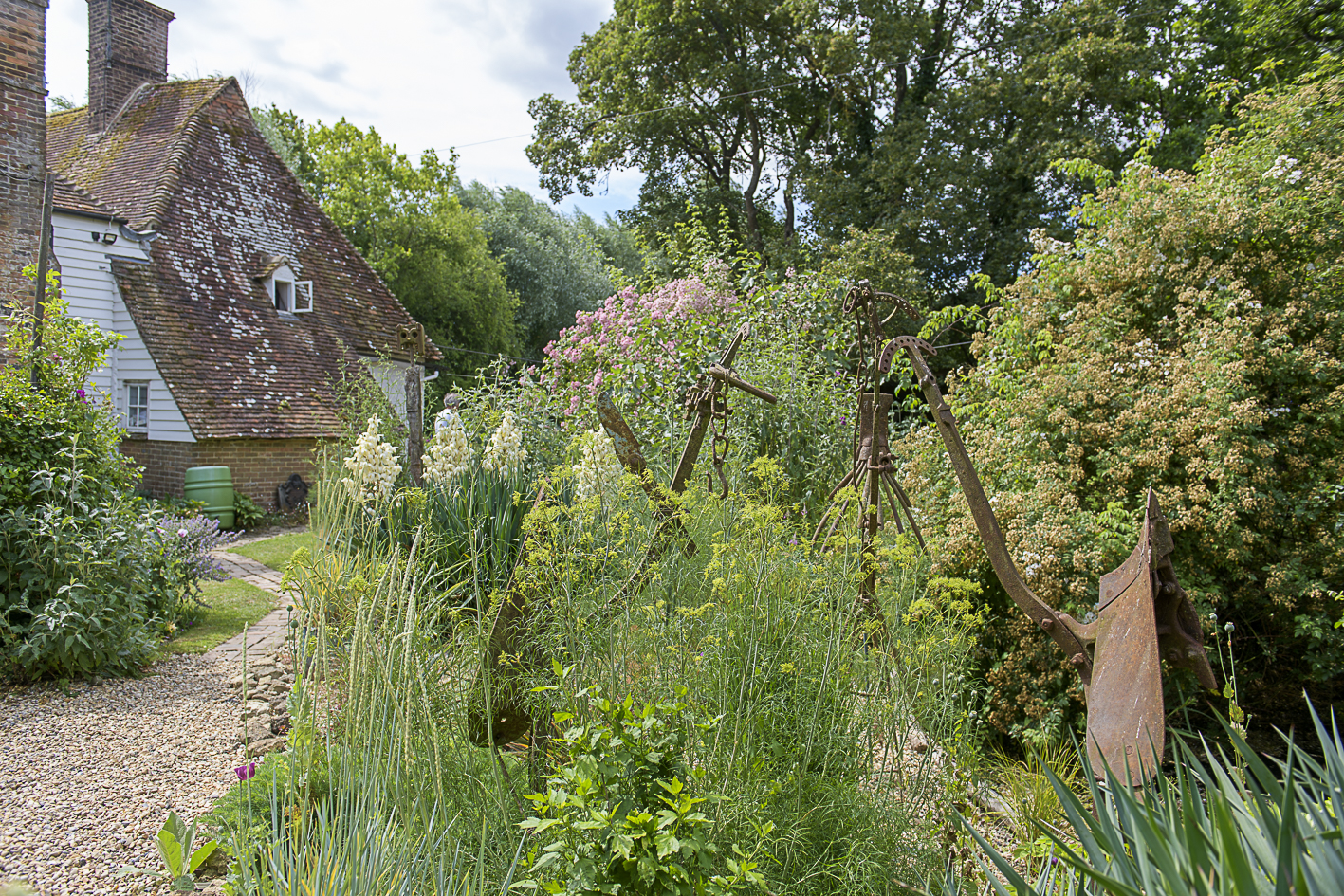
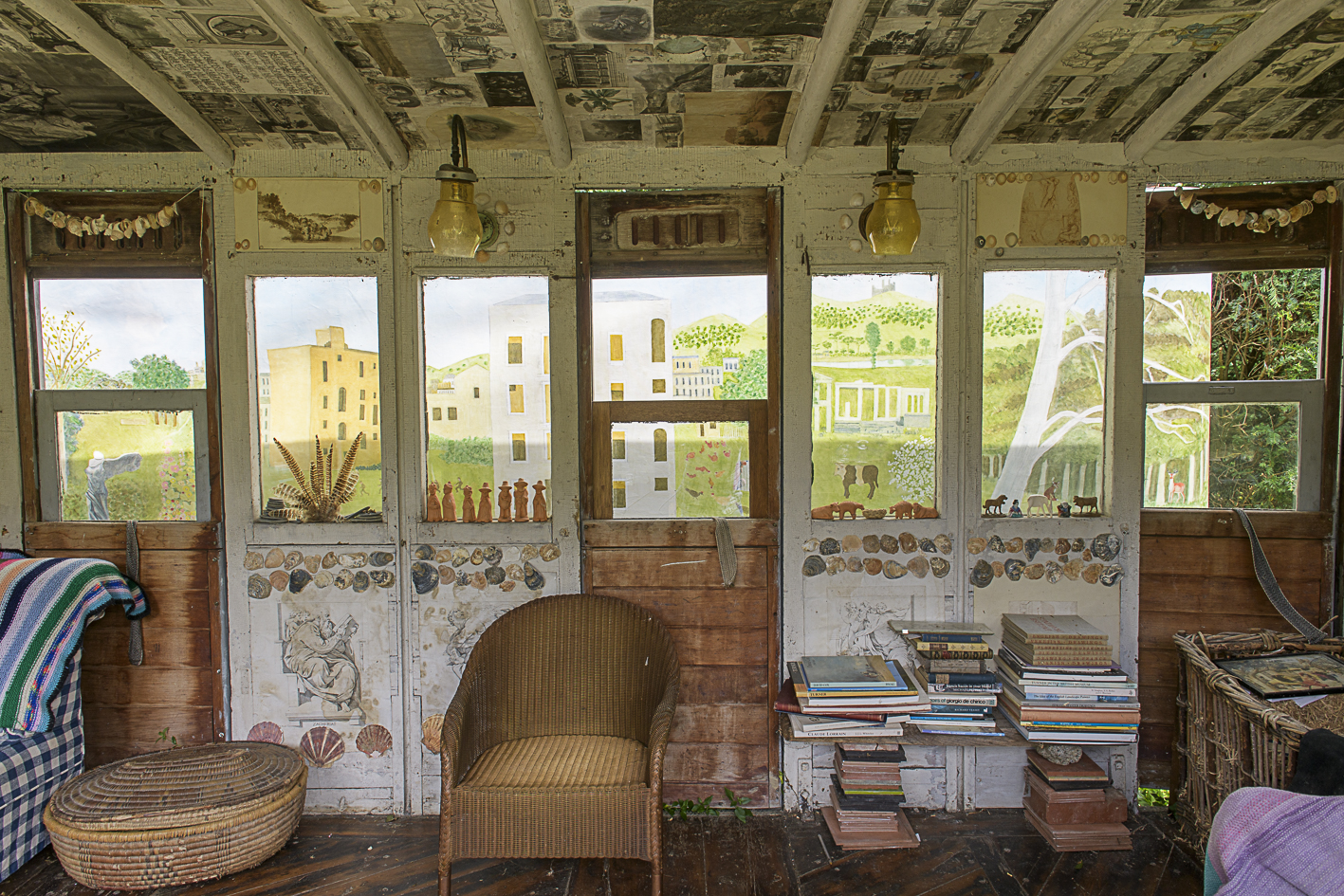
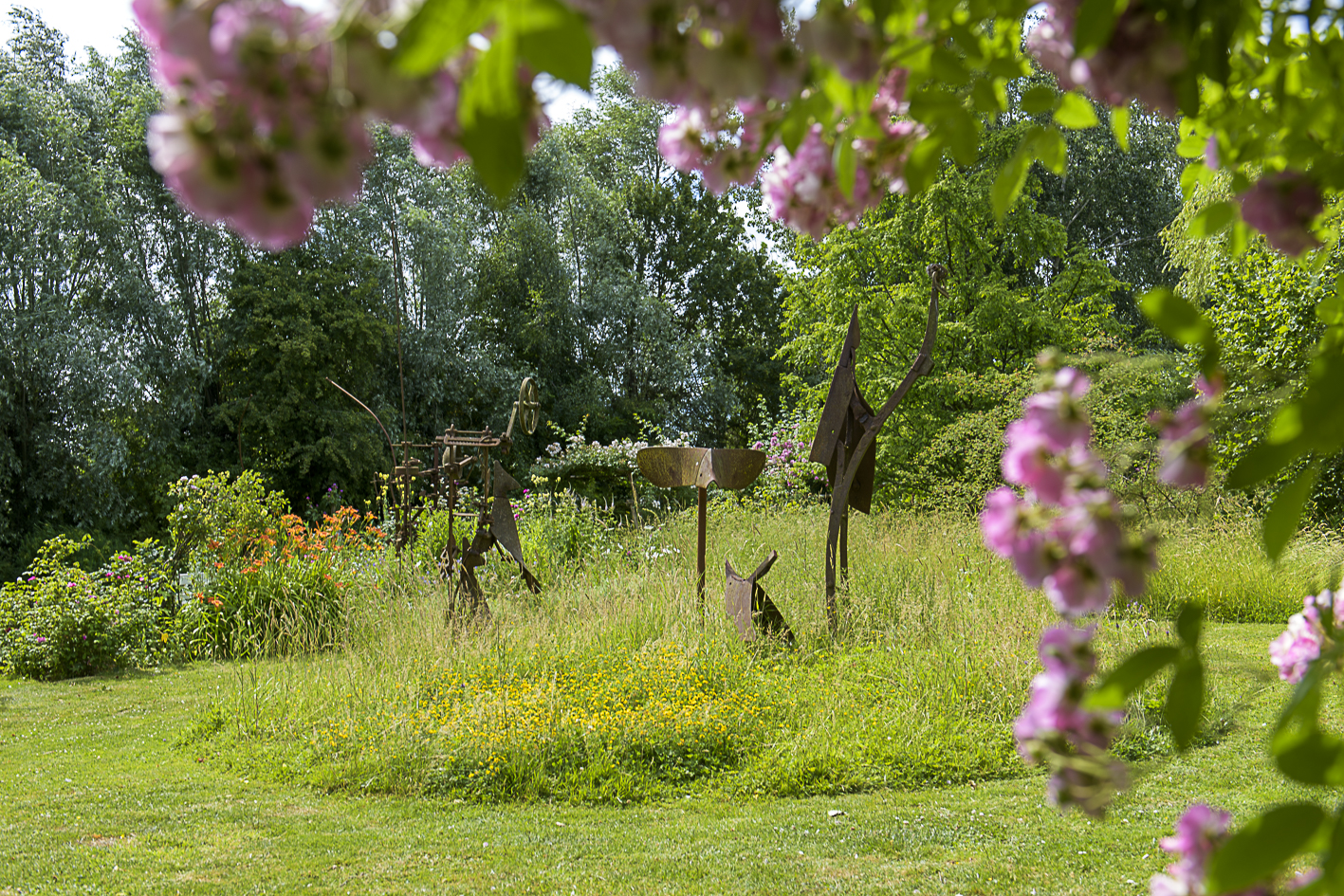
The front garden is now a glorious space, so much so that passing visitors pause to admire it. “People you don’t imagine would be interested often stop to remark on the front garden as they pass. It is a place that resonates even with those who would not call themselves gardeners.” The owners themselves often sit out on the wide stone terrace in front of the house, enjoying a meal and looking out over the front garden and the pond they share with next door. The back garden was fairly easy to get started with, and they more or less followed the outlines of what had gone before, but the front was a different matter. The house sits secluded from the road and so the front garden is as large as a back garden and presented a challenge. “It was the reverse of what it is now, approached by a small gate that led nowhere in particular. I struggled to make sense of it,” she recalls. “Then one night I dreamt how it ought to be.” The next morning, with Brian – who helped with the garden then – they took a huge rope and marked out the
curves and shapes she had seen in her sleep. “We started digging, really just feeling the way forward.” It has been that way ever since, each new area emerging as a dialogue between plants, materials, unique finds, her creative eye and the mellowing effects of the passage of time. The back garden beds have been kept almost as they were. These generous proportioned spaces are packed with cottage garden flowers and gradually drift into wilder areas as you move away from the house. Nearer the kitchen it is a little more formal, but with the easy charm of the beautifully kept cottage style – which actually requires a huge amount of effort, teetering as it does between romanticism and untrammelled abundance. “We could see the outline of the bed by the kitchen and work out where it used to be,” she explains. “It brings me light and peace. When the garden and house are part of a whole, not separate, you feel that. You don’t have to step outside to discover it – it’s there, in front of you and a part of your life.”

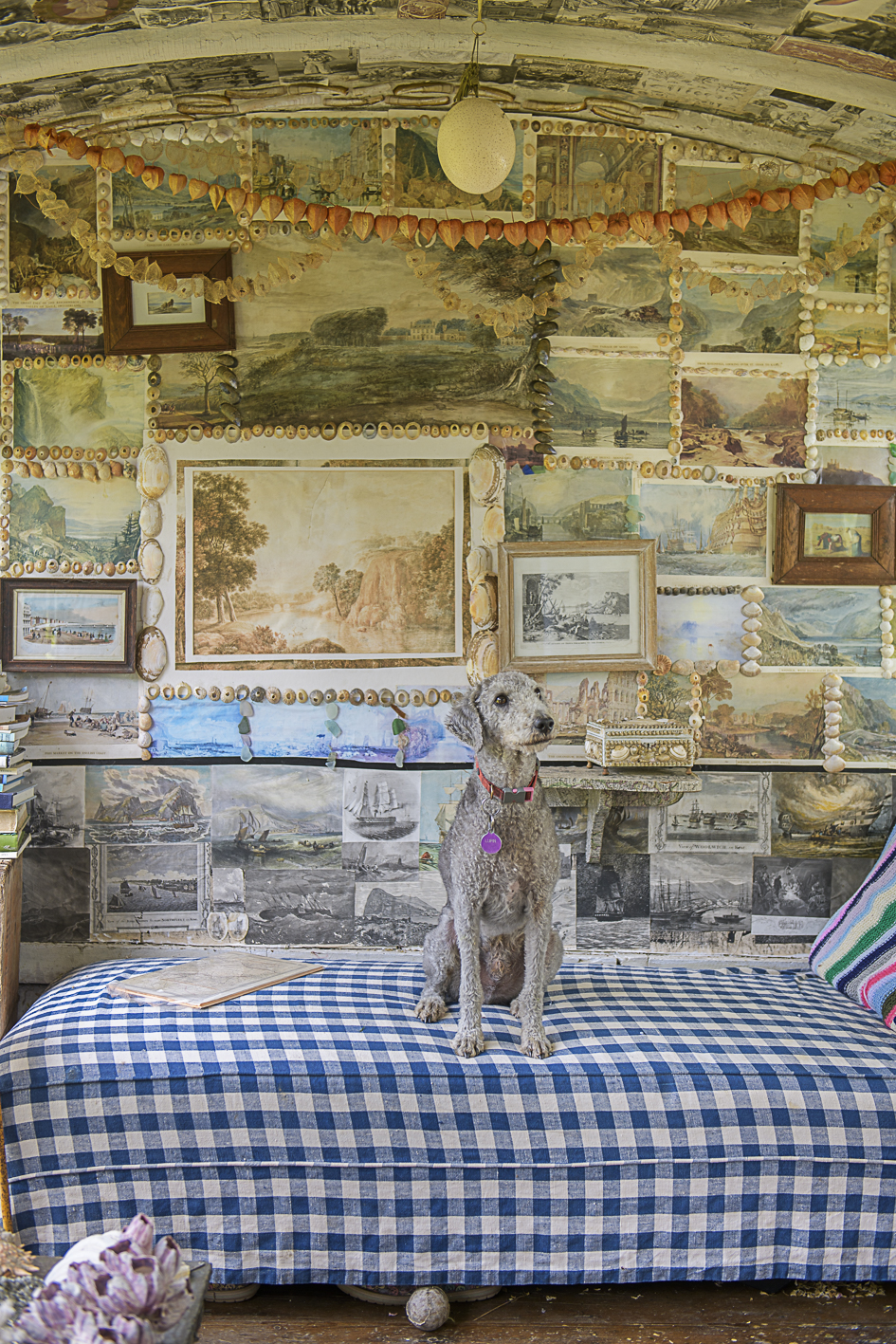
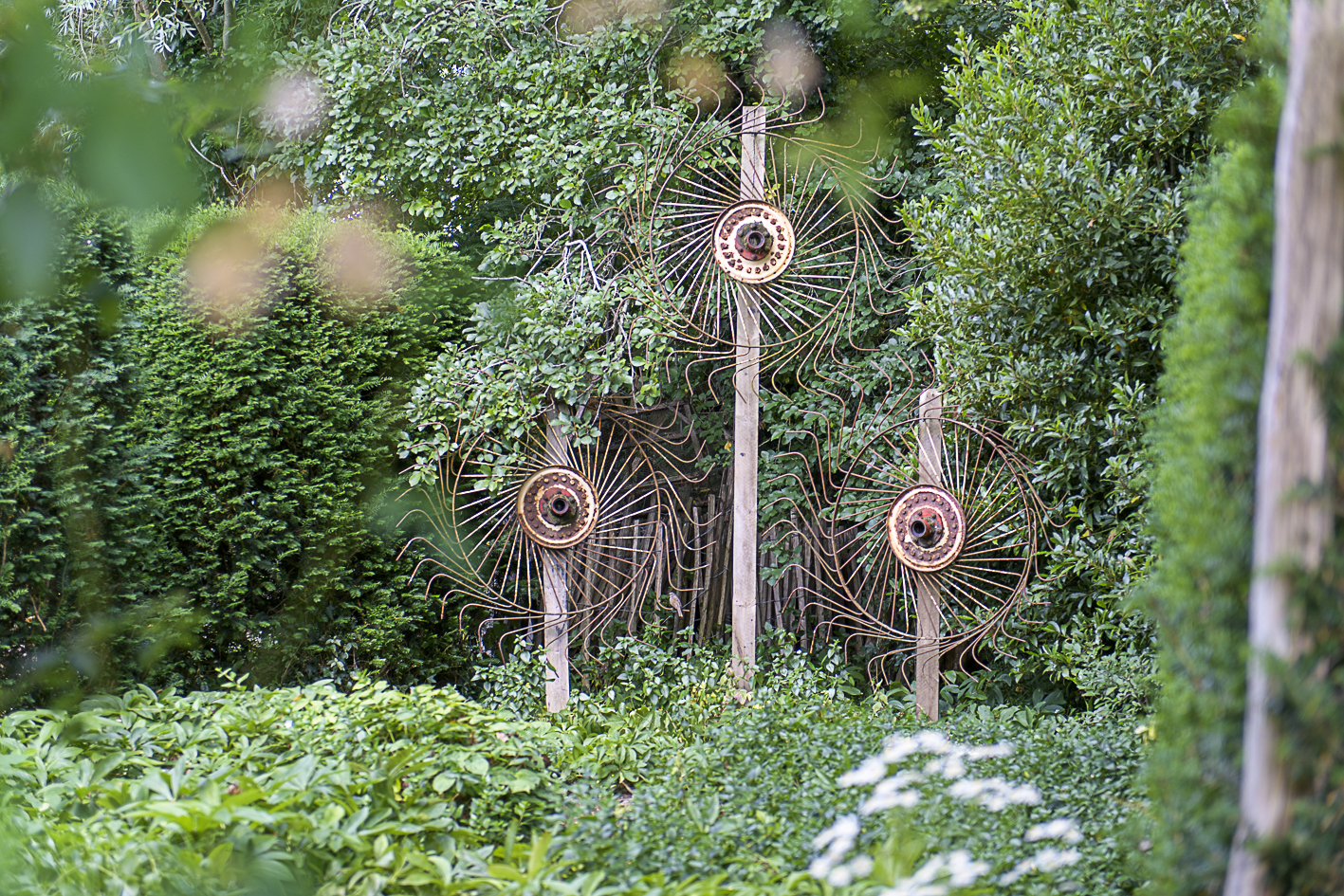
A backbone of rusted metal runs through this garden – an eclectic seam of ruin. “I love rust,” she says. “It goes into the soil and becomes part of it. It won’t pollute.” Sculptures have been made from old tools, pieces of farm machinery and relics washed up from the beach and the fields. These have been positioned in the borders and in mini meadows in the wilder parts of the garden, bringing rusty rhythm and cohesion to the planting. There’s a hop plough, iron wheels half buried, and curious metal forms gathered over decades from local scrap men, farmers and the beaches of Dungeness and Camber Sands. “I don’t know what started it all off,” she muses. “A mixture of things – a fascination with shapes. I didn’t want anything grand or any faux Greek nymphs. It’s just been about living here and knowing who I know. I’m always on the lookout.”
During lockdown they purchased a wonderful old railway carriage to use as a summerhouse – and then did a remarkable thing. They had a moving diorama made beyond the windows, so that you can sit within the old carriage and watch the landscape unfurl as though travelling by train. It is the work of local artist Tim Titchell, who spent months selecting and recreating the hand-painted panels: English pastoral scenes by Constable and Gainsborough; the golden swirls of Van Gogh’s fields; an Edward Hopper diner in luminous evening light. The operator – hidden behind the scenes – turns the painted scroll by hand, so that each landscape slips past to the rhythm created by the turn of the handle. They chose not to motorise it – too much can go wrong with outdoor machinery – but there’s a magic in its handmade honesty and the images gently cranking around.
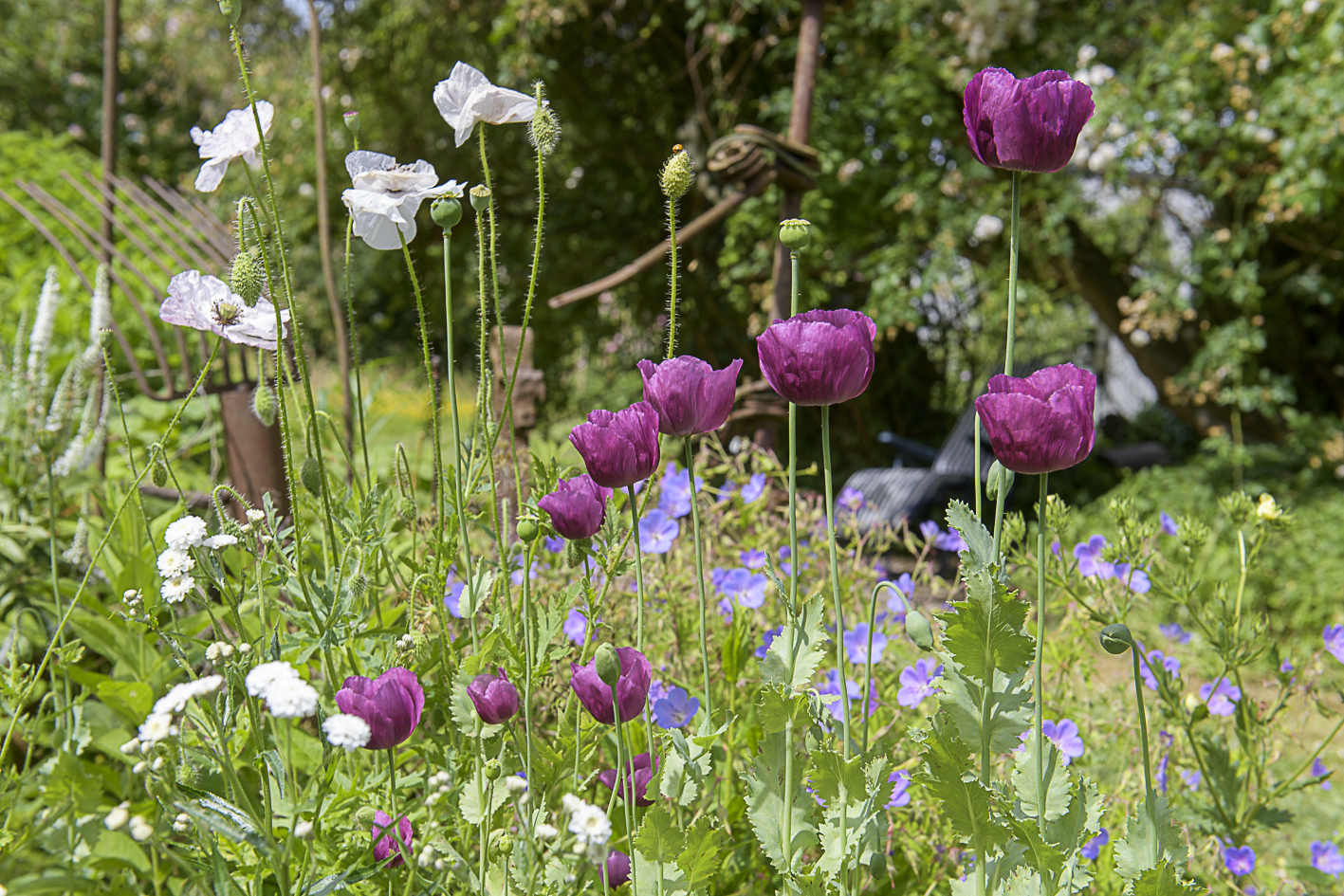

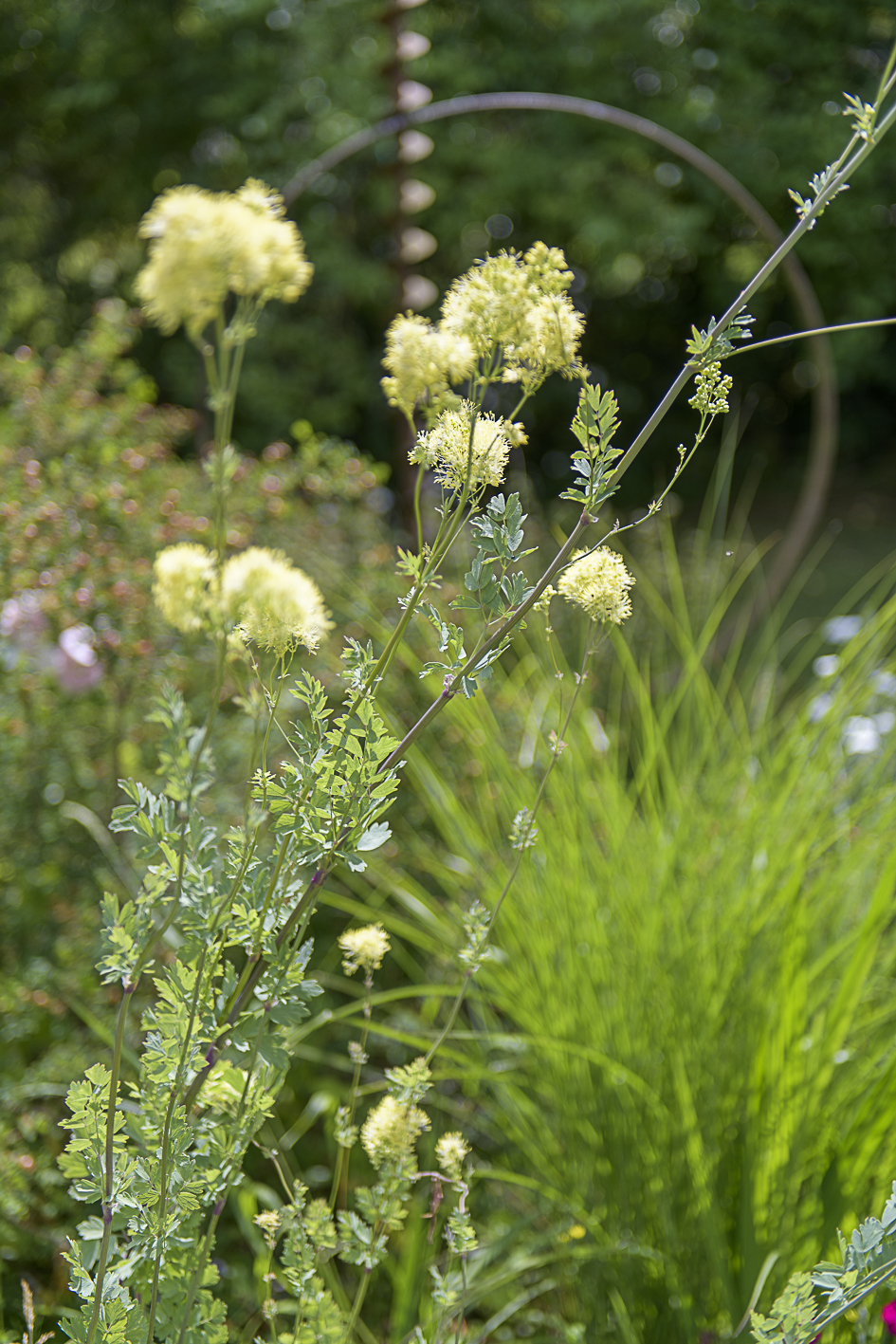
The decoupaged interior of the carriage contains fascinating collected objects – glass, shells and trinkets – and you could spend hours in here enjoying the scene beyond the diorama. It has become not just a quirky summerhouse, but a garden folly, playfully crafted with serious skill, a work of art in itself.
We are accompanied around the garden by Lupin, the couple’s handsome Bedlington terrier with his beautiful grey, lamb-like coat and a calm, intelligent manner. Lupin is in tune with the garden and has been a huge comfort to the owner, who has been recovering from cancer, as has the garden. “The garden saved me,” she says. “It gave me hope, beauty, involvement.” Even during gruelling chemotherapy, “when I felt like a wreck, I would go outside just to do one small thing. And out there, something would always capture me – the huge golden seeds of the Tragopogon blowing across the garden like tiny parachutes filled with light, or the scent of the sweet peas coming into bloom.”
At the end of August, they will open the garden for Macmillan Cancer Support. They opened for the first time last year with great success. This year in addition to the garden itself and, of course, tea and cakes, there will be a book sale in the garage. The garden will be looking splendid, filled with Salvias, Dahlias and other late summer lovelies. “It is hard work,” she admits, “but worth it.” There’s no favourite season, but she does love the spring and the autumn, the times of growth, romantic decay and renewal. “Tastes change, each season you see things that you’ve never seen before.
The winter flowering things started very early this year and it’s been a good year for the roses.” There are some fabulous roses in the garden, looked after very well by Phillip, who helps out. “Phillip is just brilliant with them.” The light changes through the seasons too, sinking lower and then rising higher in the sky, enhancing sculptural effects through the borders. At any time of year, the garden is a space of quiet industry and reflection. There is no sentimentalism here, no soft-focus approach to nature. Rather, it is an acceptance of change, growth, and beauty all held together by rusting iron forms and the living landscape.
The planting reflects a lifetime of friendships and exchanges. The owner grows many of the plants from seed and cuttings, ordered from Derry Watkins at Special Plants – “I’ve never had a bad batch from her” – Plantsman’s Paradise, and of course Great Dixter – “A huge source of inspiration.” She regularly swaps cuttings with friends and other gardeners. “Gardeners are greedy people,” she smiles, handing us cuttings of a beautiful salvia that proves the point. Greedy as gardeners may be, they’re generous too – not just with plants and cuttings, but with their time, with sharing their gardens, and the plants that grow in them.
Visit Pimphurst Farm (TN26 3EE) during August Bank Holiday Weekend from 11am-6pm to see a truly beautiful garden, a unique diorama and some fabulous sculptures. Stay to buy a book, enjoy a cup of tea and piece of cake in this uplifting space – and know that you will also be supporting a very worthy cause.
Join Jo Arnell for her new border design course in October hornbrookmanor.co.uk
You may also like
In the bleak midwinter
Jo Arnell explains how to brave the dark and chilly winter blues with a little help from your garden Winter can be hard for some of us and Seasonal Affective Disorder (SAD) is a real thing, linked to the lack...
Let’s go local
Jo Arnell gives her recommendations for plants that thrive naturally in the great British climate Our native plants are tough. Able to survive frosts, wet winters and – once established – short periods of drought too. They are the bedrock,...
In Shrubs We Trust
Jo Arnell pays attention to some often-overlooked garden stalwarts Shrubs are back. I’m not sure that they ever went away to be honest, but drifts of perennials and meadow plants have been stealing the limelight in recent years. Perhaps it’s...

